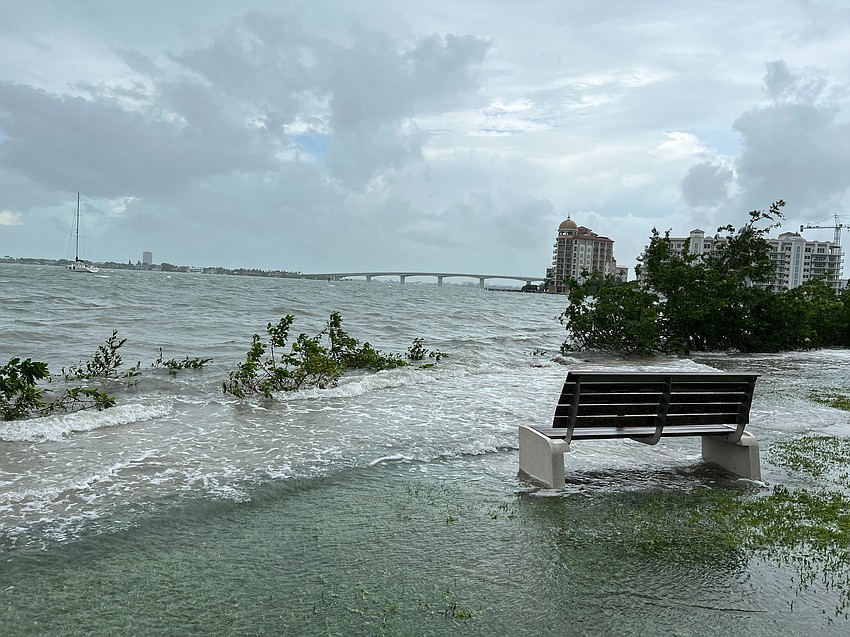- July 18, 2025
-
-
Loading

Loading

Sarasota County is gearing up for the official start of the 2024 hurricane season, which begins June 1.
Preparations made this year could be crucial. Forecasters are predicting a very active hurricane season, with one group of scientists issuing what’s being called its most aggressive forecast in 30 years.
Sandra Tapfumaneyi, the county’s emergency management chief, said Sarasota County is ready for whatever 2024 throws at it.
“There's been a few storms that have come through and affected Sarasota the last couple of years, and we learned a lot from those,” she said. “Really, we have a good plan in place for this hurricane season.”
Tapfumaneyi said they also learned from studying what happened in Lee County, which took the hardest hit from Hurricane Ian.
“You can learn a lot from seeing how things played out in those areas,” she said.
One thing the county will focus on this year is trying to make residents aware of the risks in deciding whether to stay or evacuate during a storm.
“During Ian, we heard from the residents there (Lee County) that they were not understanding the risks, when we were talking about 10 to 15 feet of storm surge,” she said. “We need residents to really listen to the evacuation orders issued per each storm, and to treat them seriously so that they don't get caught up into making decisions for their families and their property based off of what previous storms have done here.”
While forecasters themselves admit it’s still too early to say with certainty what the 2024 hurricane season will look like, predictions so far are sobering.
In their annual report, scientists at the University of Pennsylvania said their data predict 33 named storms this year.
The Penn researchers noted that would rank as the third-highest season on record; the fifth-highest number of total hurricanes; and the ninth-highest number of major hurricanes.
The Penn team also compared 2024 with five previous years that had similar early conditions — El Niño conditions the previous winter, followed by La Niña conditions during the peak of the Atlantic hurricane season (August-October). These five years, called analog years, also had above-average sea surface temperatures in the tropical Atlantic early in the year.
Analog years | |||
| Named Storms | Hurricanes | Major Hurricanes | |
| 1878 | 12 | 10 | 2 |
| 1926 | 11 | 8 | 6 |
| 1998 | 14 | 10 | 3 |
| 2010 | 19 | 12 | 5 |
| 2020 | 30 | 14 | 7 |
“We’ve seen many hyperactive seasons over the past decade, and in just about all cases, like our prediction for this year, the activity is substantially driven by ever-warmer conditions in the tropical Atlantic tied to large-scale warming,” said Michael Mann, presidential distinguished professor in the Department of Earth and Environmental Science and director of the Penn Center for Science, Sustainability and the Media.
Meanwhile, the highly respected annual prediction from Colorado State University predicts 23 named storms and 11 hurricanes, including five major hurricanes.
The CSU prediction also sees much higher odds of a major hurricane hitting the U.S. than usual: 62%, compared to the long-term average of 43%.
And Florida may again be in Mother Nature’s crosshairs. The CSU forecasters said there’s a 34% chance for a major hurricane to hit the East Coast or Florida Peninsula and a 42% chance that the Gulf Coast will see a storm make landfall.
The annual prediction from the National Oceanic and Atmospheric Administration is due out later this month.
Having a disaster plan worked out before the season starts is critically important, Tapfumaneyi said.
“That disaster plan should encompass if they have to evacuate, and where they would evacuate to, she said.
Evacuation zones maps can be complicated to read. Sarasota County has a webpage where residents can simply type in their address to see which zone they are in.

“We also would encourage people to have a disaster kit prepared,” Tapfumaneyi noted.
Typical kits include such things as batteries, a first-aid kit, medications, cash, important documents, extra keys, and clothing.
The county’s website also has checklists that can be used in creating a disaster kit.
“We want to be sure that if you’re sheltering in place that you have enough supplies for 3-7 days,” Tapfumaneyi said, including nonperishable foods and water (one gallon per person per day.).
If you have to think about going to one of the county’s designated evacuation shelters, she reminded residents that every shelter in Sarasota County is pet-friendly.
“Plan for pets. You need a crate, pet supplies, and a photo of your pet in case you’re separated,” she said.
You can even sign up for a ride to an evacuation center if you do not have transportation. If you have special qualifying medical needs, there is a special shelter where you and a caregiver can ride out the storm. Prior registration is needed. Besides the website, residents can call the county’s 311 system to get information.
“We want to remove any barriers that people have to evacuate," Tapfumaneyi said. “You can always reach us.”